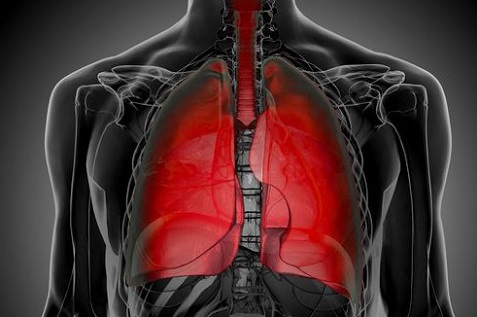Nikhil Prasad Fact checked by:Thailand Medical News Team Jul 07, 2024 9 months, 2 weeks, 5 days, 15 hours, 37 minutes ago
Medical News: Idiopathic Pulmonary Fibrosis (IPF) is a mysterious and chronic lung disease. This condition causes damage to the air sacs in the lungs, leading to severe scarring and breathing difficulties. But what makes IPF even more challenging is its link to low oxygen levels, or hypoxia, in the lungs.
 Hypoxia And Invadosomes In Idiopathic Pulmonary Fibrosis
The Role of Oxygen in Lung Health
Hypoxia And Invadosomes In Idiopathic Pulmonary Fibrosis
The Role of Oxygen in Lung Health
The lungs are unique because they rely heavily on oxygen from the air we breathe, rather than oxygen carried by the blood. This setup makes them particularly vulnerable when oxygen levels drop. Hypoxia in the lungs can lead to serious complications, including increased mucus production and reduced ability to repair and regenerate lung tissue.
What Happens in IPF?
In people with IPF, the air sacs in the lungs become damaged and scarred. This scarring, or fibrosis, makes it hard for oxygen to move from the lungs into the blood. This means the lungs have to work much harder to get enough oxygen, especially in the lower parts of the lungs where fibrosis is most severe.
The Connection Between Hypoxia and IPF
Hypoxia isn't just a result of IPF; it can also make the disease worse. A recent Canadian study that is covered in this
Medical News report, has shown that low oxygen levels can increase the production of certain proteins that cause more scarring. These proteins make it harder for the lungs to function properly, creating a vicious cycle of damage and repair.
The Role of Invadosomes
One of the critical discoveries in understanding IPF is the role of structures called invadosomes. These are tiny, cell-based structures that help cells move and break down the extracellular matrix, which is the network of proteins and other molecules that support cells.
In IPF, lung cells called fibroblasts become very active and start forming more invadosomes. This activity helps them invade surrounding tissues and contribute to more scarring. Researchers from Université de Sherbrooke-Canada, Centre de Recherche du Centre Hospitalier de l’Université de Montréal (CRCHUM)-Canada and Université de Montréal-Canada found that hypoxia increases the formation of invadosomes in these lung fibroblasts, making the disease worse.
How Invadosomes Are Formed
Invadosomes are formed through a complex process involving several signaling molecules. Two key players in this process are lysophosphatidic acid (LPA) and its receptor, LPA1. These molecules help cells respond to low oxygen levels and form invadosomes.
When researchers exposed lung fibroblasts to hypoxia, they found that these cells formed more invadosomes. This formation was driven by LPA1 and other signaling pathways involving proteins like PDGFR-Akt.
Blocking Invadosome Formation
Given the harmful
role of invadosomes in IPF, researchers looked for ways to block their formation. They found that certain drugs could inhibit the signals that promote invadosome formation. For example, nintedanib, a drug used to treat IPF, was able to reduce the number of invadosomes formed by lung fibroblasts.
In addition to nintedanib, other inhibitors targeting LPA1 were also effective.
These findings suggest that blocking the formation of invadosomes could be a promising strategy for treating IPF and preventing further lung damage.
The Importance of Early Detection and Treatment
Understanding the role of hypoxia and invadosomes in IPF highlights the importance of early detection and treatment. By identifying the disease early and starting treatment to block invadosome formation, it may be possible to slow down or even stop the progression of lung scarring.
Future Research Directions
Future research will continue to explore how hypoxia and invadosomes contribute to IPF. Scientists are also looking at other conditions where hypoxia plays a role, such as cancer and other fibrotic diseases. The goal is to find new treatments that can effectively target these harmful processes.
Conclusion
IPF is a challenging disease that involves complex interactions between low oxygen levels and lung cell behavior. The discovery of invadosomes and their role in promoting lung scarring opens up new possibilities for treatment. By targeting the signals that lead to invadosome formation, we may be able to develop better therapies to help people with IPF breathe easier and live longer, healthier lives.
The study findings were published in the peer reviewed journal: Cells.
https://www.mdpi.com/2073-4409/13/13/1152
For the latest about Fibrosis, keep on logging to Thailand
Medical News.
Read Also:
https://www.thailandmedical.news/news/vitamin-e-can-help-with-lung-fibrosis
https://www.thailandmedical.news/news/unraveling-the-zinc-pathway-a-promising-breakthrough-for-cystic-fibrosis-treatment
